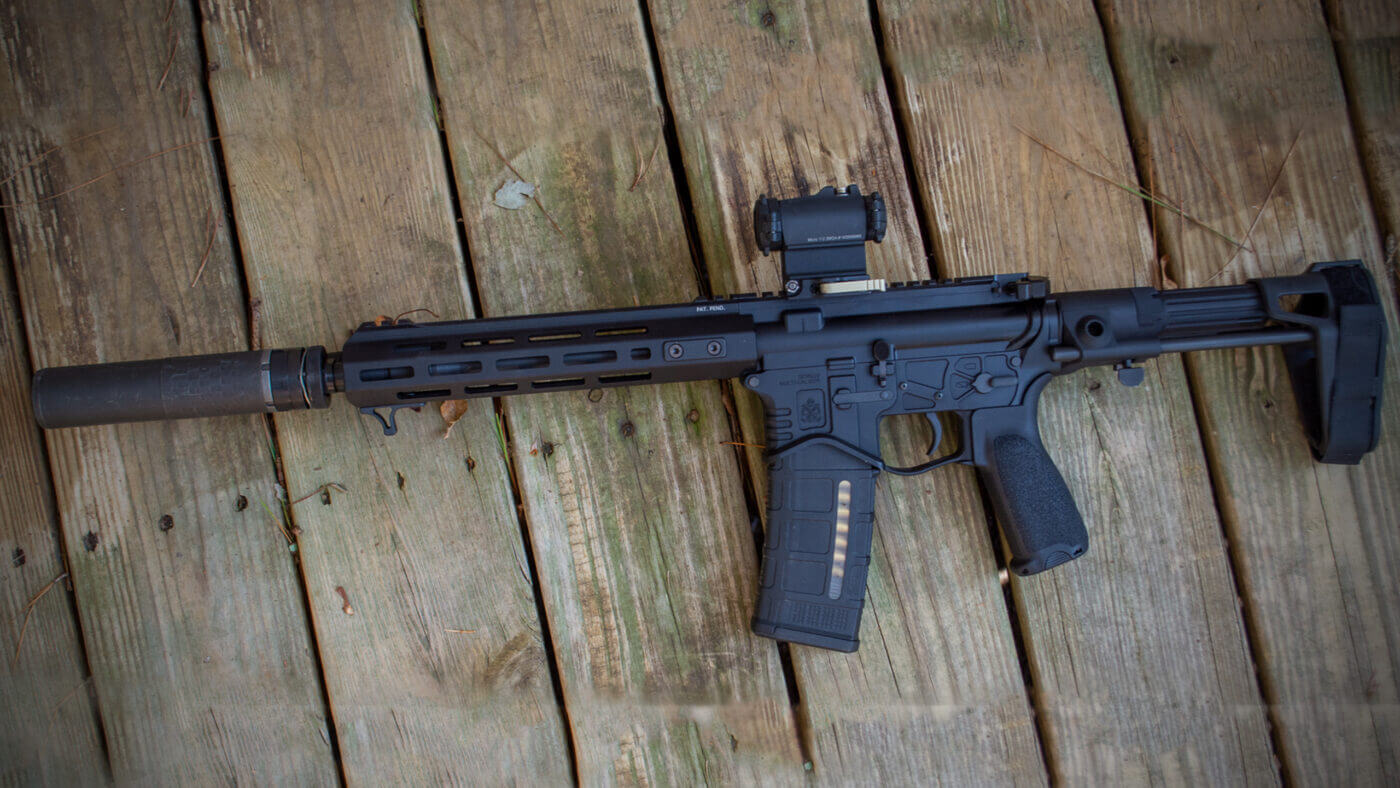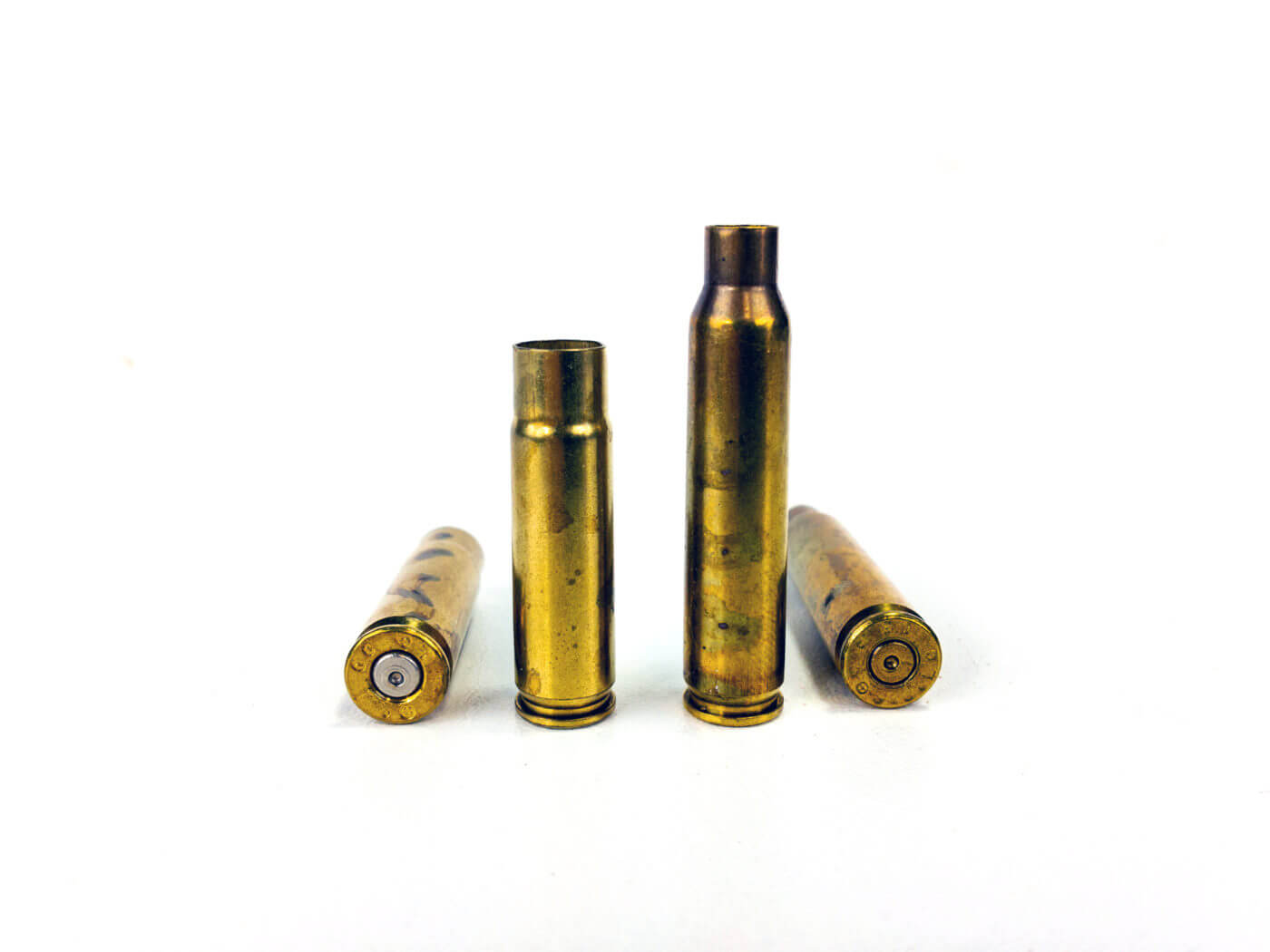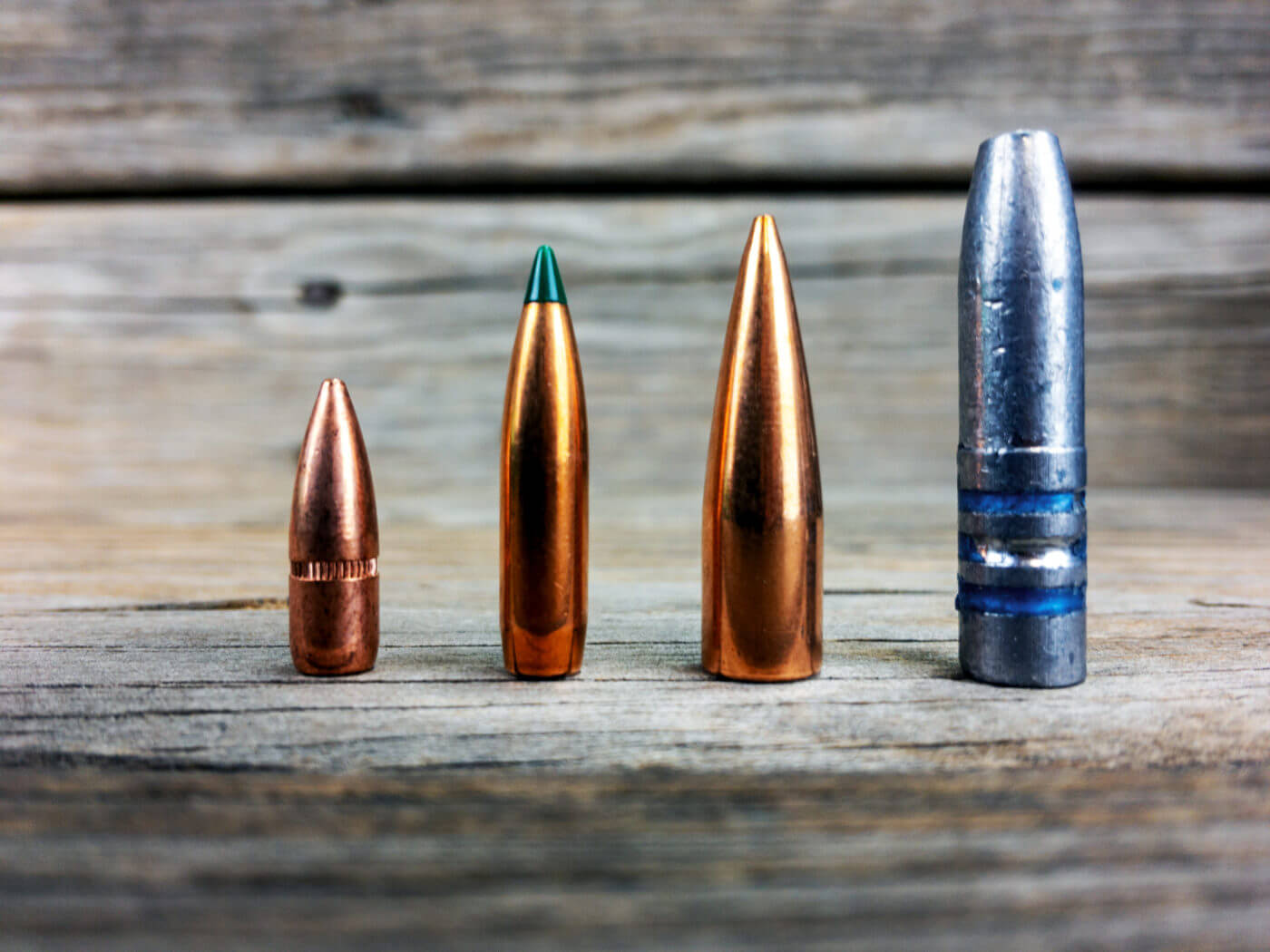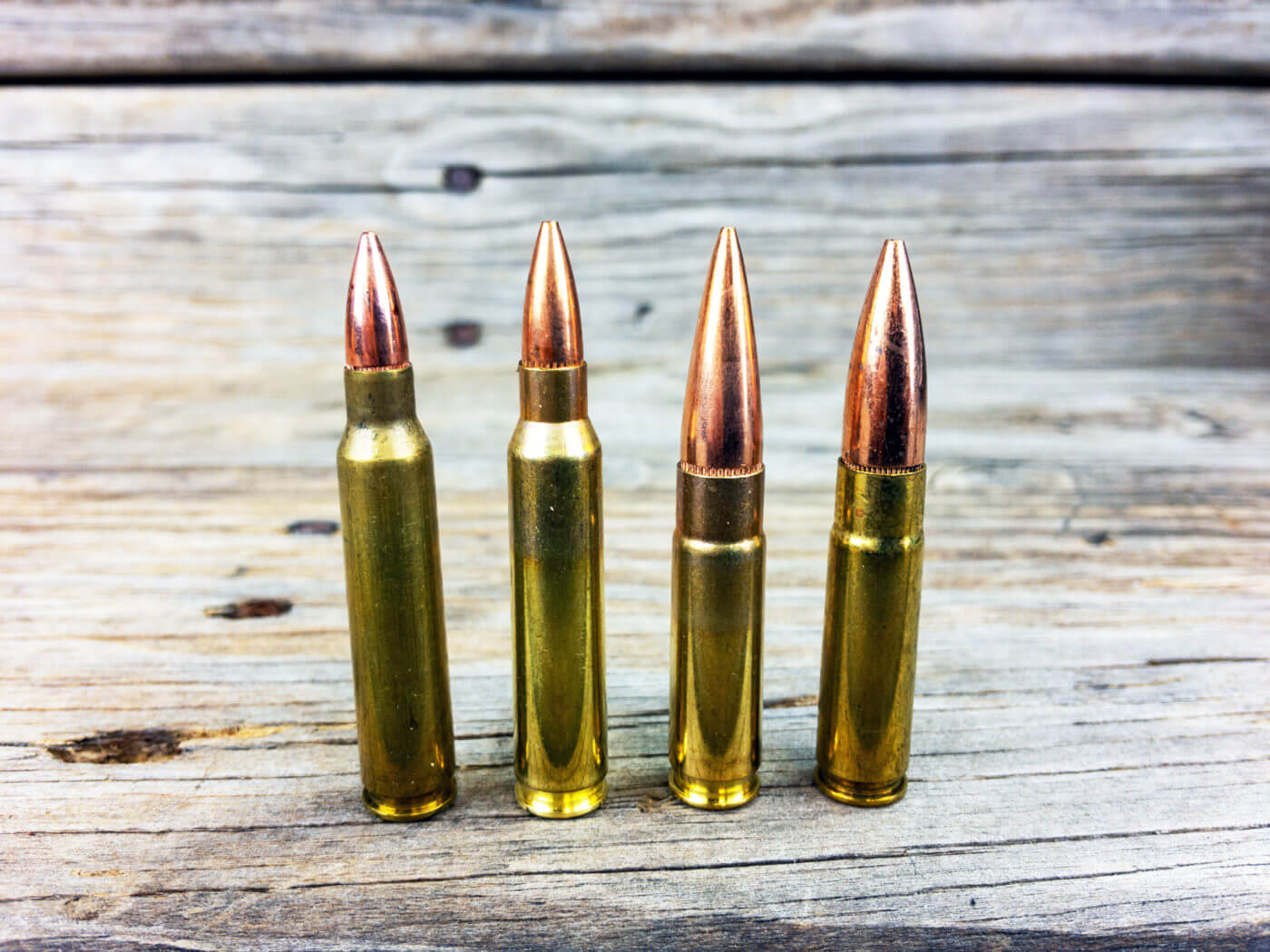5.56 vs. 300 BLK: Which Rifle Cartridge Is Best?
June 23rd, 2024
7 minute read
There are many classic debates such as Ford or Chevy? 9mm vs. .45 ACP? 5.56 vs. 300 Blackout? The debates never end.
The caliber disagreements often persist because there’s usually a nugget of truth in the arguments for either side.
Then there’s the issue of context. These disagreements are often battled in general terms of what’s “best” with no defining parameters for how “best” is determined. Is a pistol better than a rifle? For concealed carry it probably is while for home defense, the rifle might be the better choice.

Let’s take a closer look at the 5.56x45mm NATO vs. 300 BLK question. For a “real life” comparative illustration, we’ll consider two very similar AR pistols that vary primarily by caliber: the Springfield Armory SAINT Edge Pistol chambered for the 5.56mm NATO cartridge and the SAINT Pistol chambered in .300 BLK.
What Is 300 Blackout?
Introduced as the .300 AAC Blackout, the goals of the cartridge were simple: achieve similar ballistics to the 7.62x39mm cartridge (used in the AK-47 and AKM assault rifles), develop a round that delivers more stopping power when launched from a short-barreled rifle, and improve performance over 9x19mm Parabellum loads in the subsonic velocity band.
As an additional requirement, the new rifle cartridge should operate in the standard AR-15-style rifle parameters and load and cycle properly from STANAG magazines – magazines designed for AR-15, M16 rifle and M4 carbine firearms. [STANAG magazines are detachable box magazines that comply with standardization agreements on the size and other specifications set by the North Atlantic Treaty Organization.]
The first goal seems easy, right? Why not just make an AR-15 upper receiver chambered and barreled for the ubiquitous 7.62x39mm centerfire ammunition?
For starters, that would be copying from our enemies and that strategy is kind of lame. More importantly, those heavily tapered cartridges don’t feed from standard AR magazines. Even if you swapped the magazines for something more banana-shaped to accommodate the sloped Commie Cartridges, there’s still the problem of the AR’s vertical magazine well.

What Is the .300 AAC Blackout?
The 300 BLK actually is a cut-down version of the .223 Remington. The brass case itself is chopped, reshaped, and expanded at the mouth to accommodate a .308 bullet instead of a .224-inch diameter one. Think of it a bit like a standardized wildcat cartridge.
Even though the bullets are longer and heavier than their .223 Remington peers, the overall cartridge length is still compatible with standard magazines.
The ramifications of that are important as we’ll see in a hot second. The case dimensions are identical as is the diameter of the case body. While the shape varies, the overall lengths are compatible, too.
Platform Differences?
Since the cartridges are so similar, not much surgery is required to convert a standard AR-15 firearm chambered in 5.56mm to 300 BLK. In fact, all you have to do is change the barrel. That’s a simple operation on an AR rifle or pistol. Once you remove the barrel nut, it just pops out for an easy swap.
Since the cartridge base is identical, the bolt and bolt carrier are unchanged. In other words, use any AR-15 bolt carrier group you like.
For the same reason, the magazines are interchangeable too. There are no modifications required to make a STANAG (NATO Draft Standardization Agreement) magazine work with 300 BLK cartridges. Oh, there’s one more benefit. Unlike “different” AR cartridge offerings like 6.8mm Remington SPC, capacity of magazines is also identical.
A word of caution – there have been instances of significant accidents when people have mixed up magazines loaded with .300 BLK rounds and those with 5.56 NATO cartridges. A 300 Blackout round will feed into a .223 Rem or 5.56 NATO chamber. But when you drop the hammer, the .30-caliber round will not travel length of the barrel and the gun will essentially explode in your face. Be careful to not mix your ammo and magazines!

What About Energy of the 300 Blackout vs. 5.56?
I’ve measured the velocity of common loads from both Springfield Armory SAINT firearms, so we can show examples of muzzle and downrange energy performance using real-life numbers.
Do note that both of the test firearms are pistols, so the shorter barrels yield lower velocities than what you’ll see on the ammo box. The SAINT Victor Pistol 300 BLK model has a nine-inch barrel while the SAINT Edge Pistol 5.56 NATO sports a 10.3″ barrel.

Downrange Performance – Is 5.56x45mm NATO or 300 AAC Blackout Better?
One notable difference between 5.56 and 300 BLK is bullet mass (or weight). Typical 5.56 NATO projectiles weigh somewhere between 55 and 77 grains. The most common supersonic 300 BLK loads use 110- or 125-gr. bullets. The subsonic ammunition normally load 220-gr. projectiles.
This creates a tradeoff. The lighter bullets used by 5.56 NATO shoot flatter over long distances but the fatter and heavier BLK bullets can carry more energy downrange. The cost is more bullet drop. So, the right choice for you depends on what you care about more.
I ran the numbers with all four options to explore how velocity and bullet drop carried with both the 5.56mm NATO and 300 BLK choices. Both pistols were set up with a 50-yard zero.

I only included the subsonic 300 BLK data at 300 and 500 yards for consistency. We didn’t want that elegant table of data points to have big gaps in it, now did we? Although, assuming one can hold high enough to account for that 377-inch (that’s 31 feet!) bullet drop at 500 yards, the BLK is still moving at a respectable clip considering that it’s intended to “compete” against handgun calibers.

Note that the use of 5.56 NATO in the context of comparison to the 300 BLK is synonymous with the .223 Remington (the parent case of the 300 AAC Blackout.) There are differences between the 5.56 NATO and .223 Remington cartridges, but for the comparisons here, they are functionally identical.
[Don’t miss Can You Shoot 223 out of a 556 Rifle.]
Subjective Factors
Bullet weight matters if you’re looking to maximize energy on target. While the classic kinetic energy measurement of ft-lbs. can illustrate destructive power, the companion metric of momentum, measured in pounds-feet per second, communicates one object’s ability to move another. So, if you’re looking for a harder hit, the BLK offering might be right for you.
On average, 55- and 77-gr. 5.56 bullets deliver 22 to 28 pounds-feet per second of momentum at the muzzle. 125- and 220-gr. 300 BLK projectiles carry 36 and 33, give or take.
Ammo cost is also something to consider. The 5.56 NATO world benefits from the sheer quantity of rounds fired. The more people shoot it, the more companies invest in serving billions and billions of rounds to the market. That drives down the cost per round for you and me. As a lower-volume caliber, you’ll generally pay more per round for both supersonic and subsonic 300 BLK cartridges.
Of course, if you want a hard hitting cartridge that is tailor-made for suppressors, the subsonic ammo for the 300 BLK is the ideal choice. Suppressors, or silencers, are very popular for home defense as they help to mitigate damage to your hearing. This is critical in being able to communicate with other family members who may be in the house as well as being able to hear law enforcement officers when they arrive to help.
For the same reasons, law enforcement may consider the cartridge for suppressed weapons.
Net-Net in the Final 300 Blackout vs. 556 Ballistics Comparisson
Did the .300 AAC Blackout achieve what its designers intended? I think so. The 300 BLK ballistics are similar to those of the 7.62×39, it performs well from a short barrel and its subsonic and suppressed performance is superior to the 9mm.
What’s right for you? That’s a bit like asking whether you prefer four-wheel drive or two. They both have pros and cons for their respective applications. Which one is right for you depends on exactly how you intend to use it. In the case of 300 Blackout vs. 5.56mm NATO, both are suitable for defensive purposes.
In the AR-15 hunting world, 5.56mm is more commonly used for small game and varmints where fragmenting terminal performance is desirable. For larger game where penetration is more important, the BLK presents a better overall solution.
The bottom line is this: light and fast versus slower and heavier. Sounds kind of like the 9mm vs. .45 ACP debate, doesn’t it?
Due to an ATF ruling regarding the configuration of pistols with stabilizing braces, these firearms can be subject to NFA (National Firearms Act) regulations as short-barreled firearms. It is the buyer’s responsibility to comply with all rules, restrictions and/or laws determined by your city or state. Please ensure you are up-to-date on all current laws.
Editor’s Note: Please be sure to check out the new The Armory Life forum, where you can comment about our daily articles, as well as just talk guns and gear. Click the “Go To Forum Thread” link below to jump in!
Join the Discussion
Continue Reading
Did you enjoy this article?

 480
480






